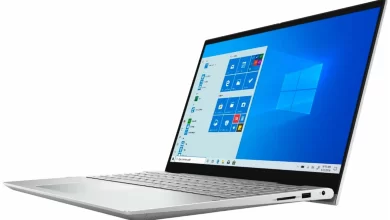What Is an AI Video Editing Software?

The gilded age of video content is upon us. Thanks to the rise of social media, e-commerce, and instant sharing, there is no other time in history that has ushered in so much video content. AI video editing software allows users to take this explosion of video content and make it even more dynamic.
Whether you’re using a traditional camera or your smartphone as your primary source for capturing videos, most devices have some sort of AI built into them. This allows you to get the most out of your footage immediately before editing it with AI video editing software. Whether you’re trying to remove red eye from a selfie, add bokeh effects, or something else entirely, these programs are here to help. Let’s take a look at what AI video editing software can do for you. And how it can help transform your videos from ho-hum to WOW!
What Does AI Video Editing Software Do?
Video editing is a process that has been honed by expert editors since the medium was first created. Cut and paste editing has been used for decades. As a way for editors to shape a story by removing unnecessary content and creating a more dynamic and engaging account. A computer program that uses artificial intelligence can help you do both of those things. It can recognize what’s happening in the video you’re editing and suggest what you should keep and what should go.
AI video editing tools can also recognize faces, understand the light in a scene and make color correction suggestions that you probably wouldn’t have thought of otherwise.
Smart Trimming and Detection
The best way to determine if a clip is necessary for a video is to watch the entire video and decide what can be cut. Video editing software can do that for you, saving you valuable time and effort. It can detect when someone is in the frame and create a clip for that person. And it can also detect an audio clip and create a video clip for it.
This means that you don’t have to listen to the entire recording or watch the entire video to find the specific piece of content you want to use. This also means that it can find parts of the video that you might want to remove. AI can detect people who might be out of frame or behind the camera and might not be necessary for the final video.
Scene and Object Recognition
If you’ve ever tried to edit two clips together and found the lighting to be too different or the color palette too varied, you know how frustrating it can be. AI video editing software recognizes the tone of the scenes. And can adjust the lighting and color palette of one clip based on the other.
AI can recognize objects in the frame, like a green wall or a blue sky. And can adjust the hue and saturation of the video based on what’s in the frame. AI can also recognize specific faces and adjust the hue and saturation of the video based on the color of their skin. For example, if someone is wearing a red shirt. The AI can recognize that and adjust the hue and saturation of the shirt. To make it stand out less against the rest of the frame.
Dynamic Color Correction and Enhancement
Most people don’t have a color wheel handy when they’re editing a video. And even if they did, it’s likely that they aren’t entirely sure what they should be doing with it. AI video editing software can analyze the frame and make adjustments based on what it sees. It can boost or reduce the saturation of the entire frame or of specific objects in the scene.
AI can even detect a dominant color in the frame and make that the primary color in the frame. You can use this to make a blue sky whiter or a red wall greener. And it can also be used to draw attention to a specific object or person in the frame.
Illuminant Detection and Exposure Calibration
AI video editing software can recognize the light source in the frame and make adjustments based on that. It can also detect if the light source is too bright or too dark and adjust the exposure of the frame to make it more balanced. This is also what allows AI to recognize people in the frame, as facial recognition is based on the brightness in the eyes. A person wearing sunglasses, or standing in a dimly lit room, will not be recognized by AI.
Conclusion
There is no question that the video content of the future will be heavily AI-driven. Thanks to the advancements in machine learning and deep learning in recent years, video content can be more engaging than ever before. In order to fully benefit from this technology. You will need to purchase video editing software that uses AI to process your content.
AI video editing software can do much more than just remove red eye from your selfie. It can recognize faces, adjust the brightness and color in a frame and make suggestions based on what it sees. This means that you can spend less time editing and more time enjoying your video content. And your videos can benefit from a dynamic, engaging experience that will keep your viewers engaged from start to finish.




